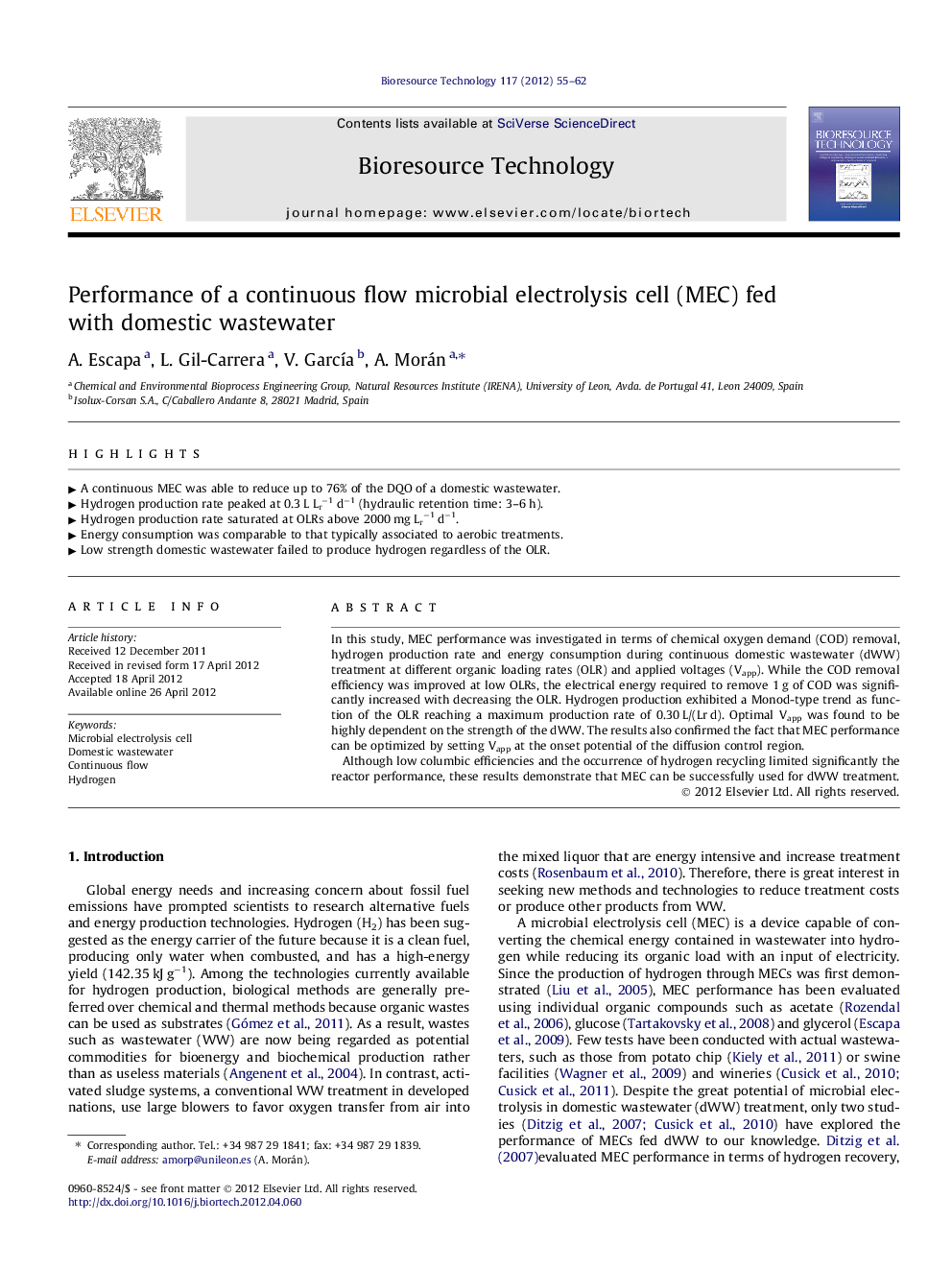| Article ID | Journal | Published Year | Pages | File Type |
|---|---|---|---|---|
| 681507 | Bioresource Technology | 2012 | 8 Pages |
In this study, MEC performance was investigated in terms of chemical oxygen demand (COD) removal, hydrogen production rate and energy consumption during continuous domestic wastewater (dWW) treatment at different organic loading rates (OLR) and applied voltages (Vapp). While the COD removal efficiency was improved at low OLRs, the electrical energy required to remove 1 g of COD was significantly increased with decreasing the OLR. Hydrogen production exhibited a Monod-type trend as function of the OLR reaching a maximum production rate of 0.30 L/(Lr d). Optimal Vapp was found to be highly dependent on the strength of the dWW. The results also confirmed the fact that MEC performance can be optimized by setting Vapp at the onset potential of the diffusion control region.Although low columbic efficiencies and the occurrence of hydrogen recycling limited significantly the reactor performance, these results demonstrate that MEC can be successfully used for dWW treatment.
► A continuous MEC was able to reduce up to 76% of the DQO of a domestic wastewater. ► Hydrogen production rate peaked at 0.3 L Lr−1 d−1 (hydraulic retention time: 3–6 h). ► Hydrogen production rate saturated at OLRs above 2000 mg Lr−1 d−1. ► Energy consumption was comparable to that typically associated to aerobic treatments. ► Low strength domestic wastewater failed to produce hydrogen regardless of the OLR.
